Abstract
The movement of labeled 3-o-methylglucose (MeG) into and out of thin carrot discs has been followed in order to gain information on sugar entry and exit mechanisms. Little or no metabolism of this derivative appears to occur in the tissue, since no products were detected either by chromatography or by analysis of respiratory CO2.
The curve relating entry to external concentration deviated somewhat from a rectangular hyperbola but suggested a carrier mechanism. Glucose and MeG each competitively inhibited the uptake of the other. Ki for MeG was estimated to be 3 times the Km for its uptake.
When discs incubated in MeG were transferred to H2O, MeG lost to the solution from the Free Space was re-absorbed against a 7-fold concentration gradient.
The addition of unlabeled MeG or glucose to the medium surrounding discs which had been maintaining a ratio of internal to external MeG of 75:1 brought about release of stored isotope. This was probably not due to exchange diffusion stricto sensu.
Efflux of previously absorbed isotopic MeG into a medium containing unlabeled MeG or glucose was temperature-sensitive. The kinetics of efflux were complex and did not suggest a simple diffusion process related to overall MeG content. However there is evidence (including the falling rate of exit with time) that slow diffusion (or slow release from adsorption) contributed substantially to efflux. The source of this flow appeared to be neither the readily accessible Free Space nor the main storage compartment. Calculation indicated that the volume of this “slow diffusion compartment” might be about 1% of the total volume of the discs.
Full text
PDF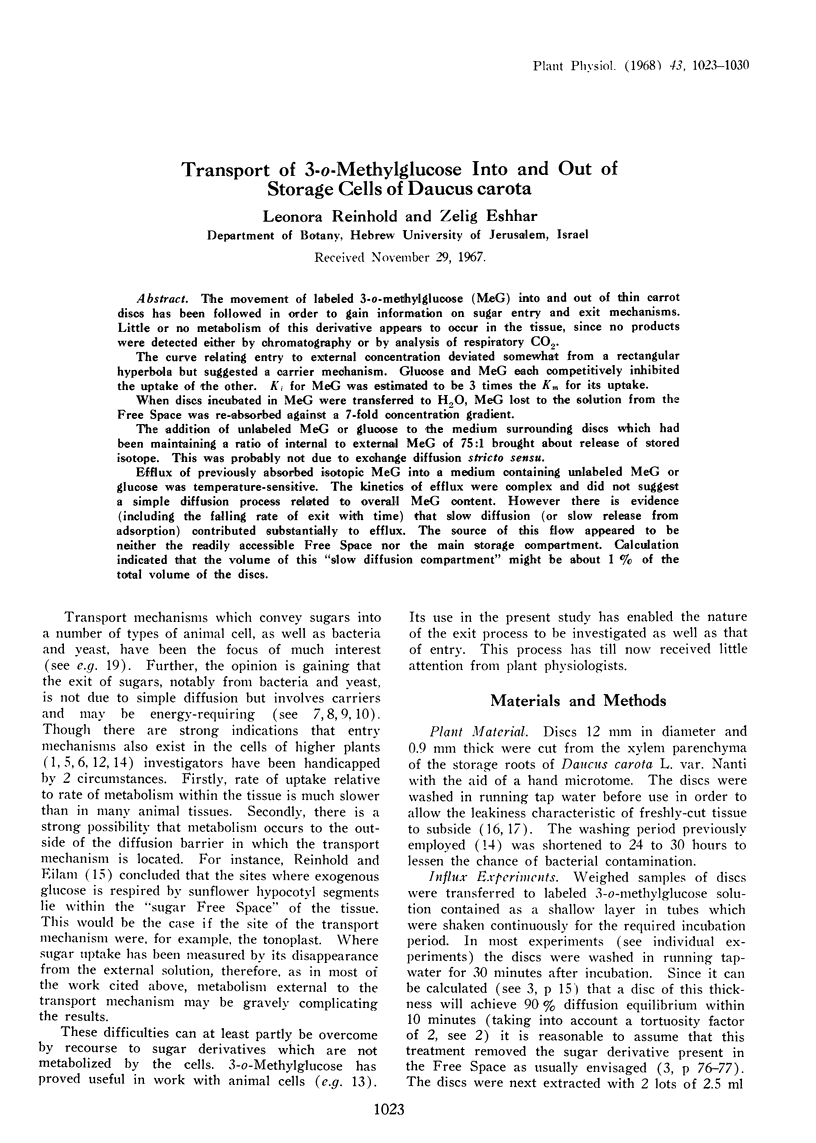
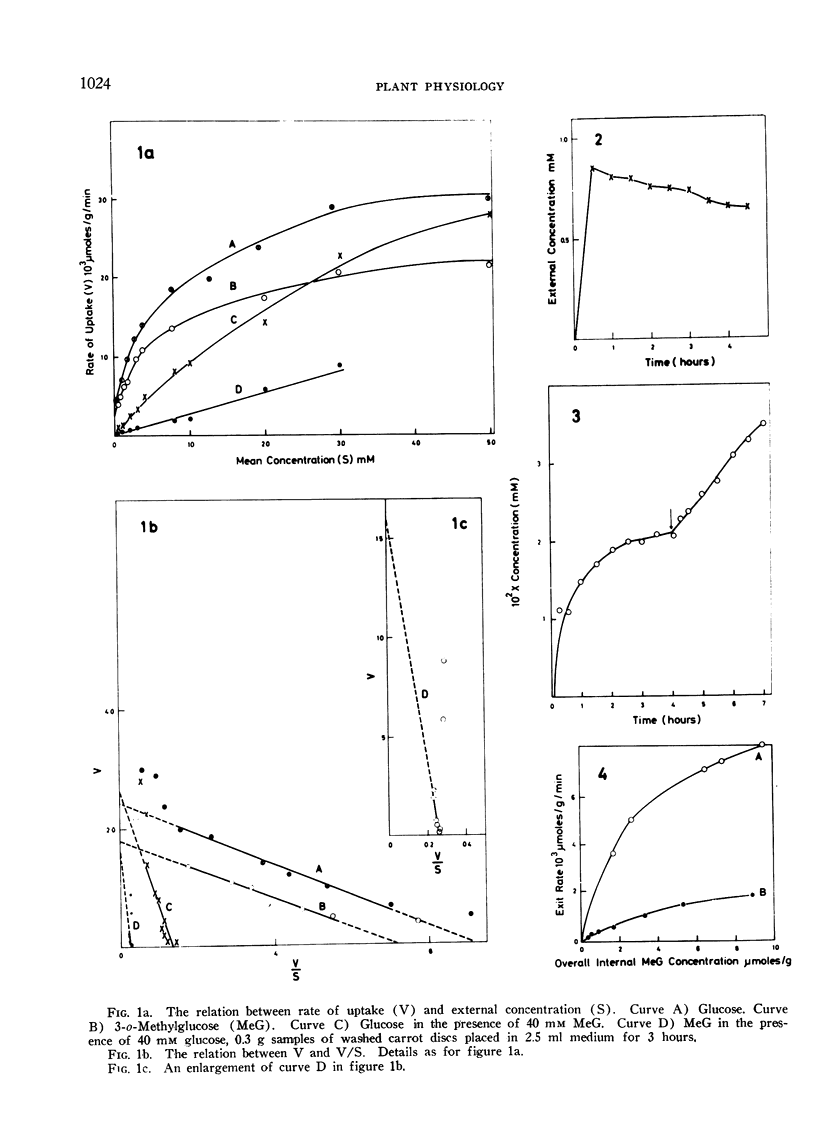
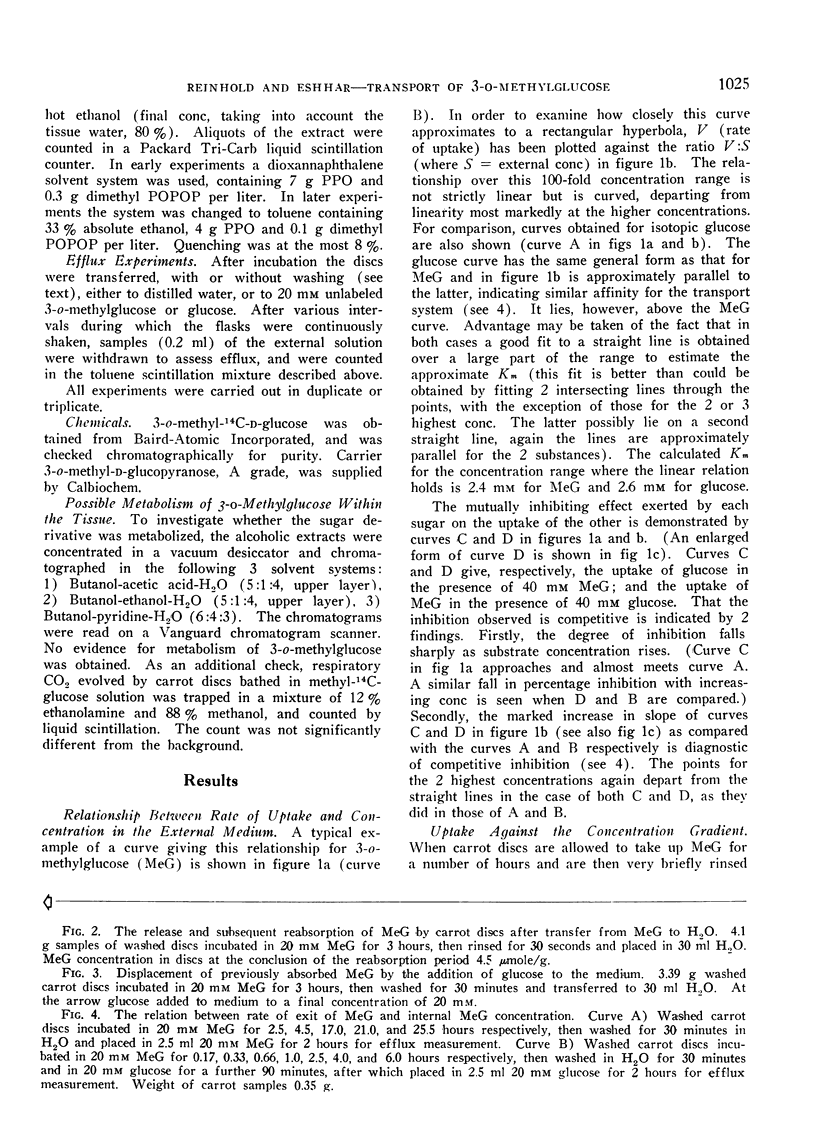
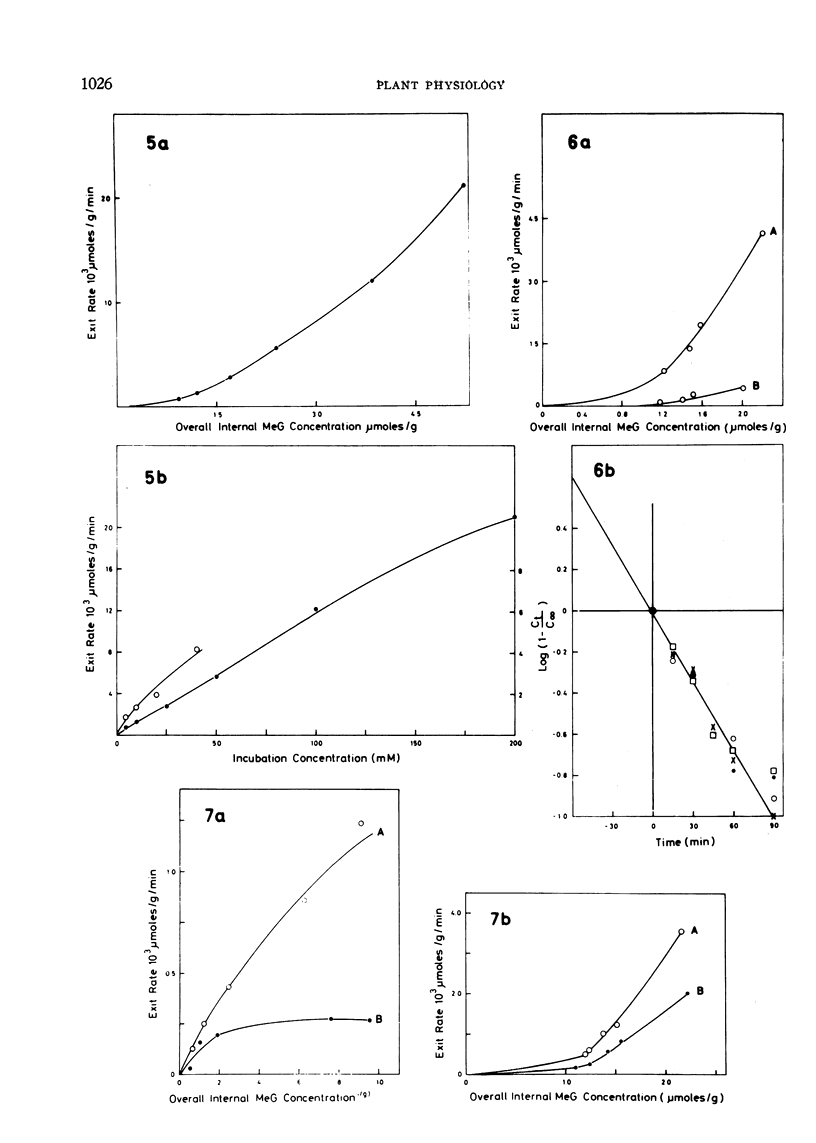
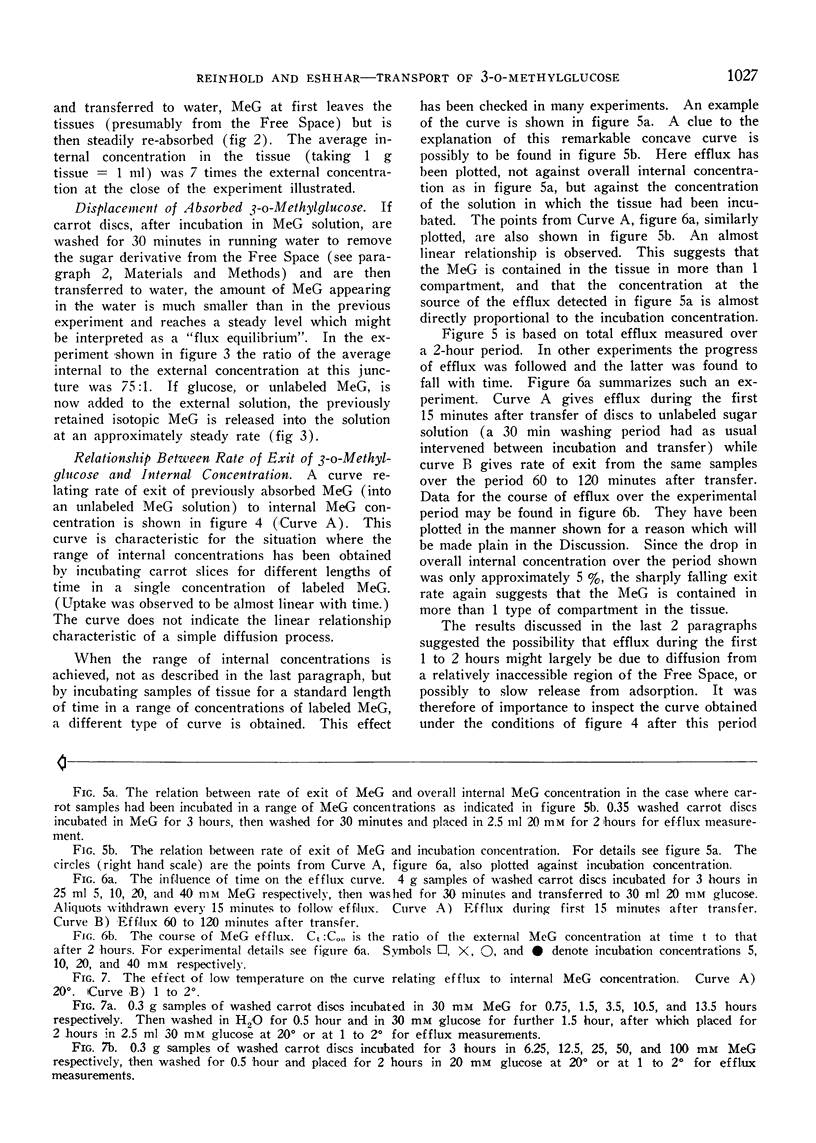
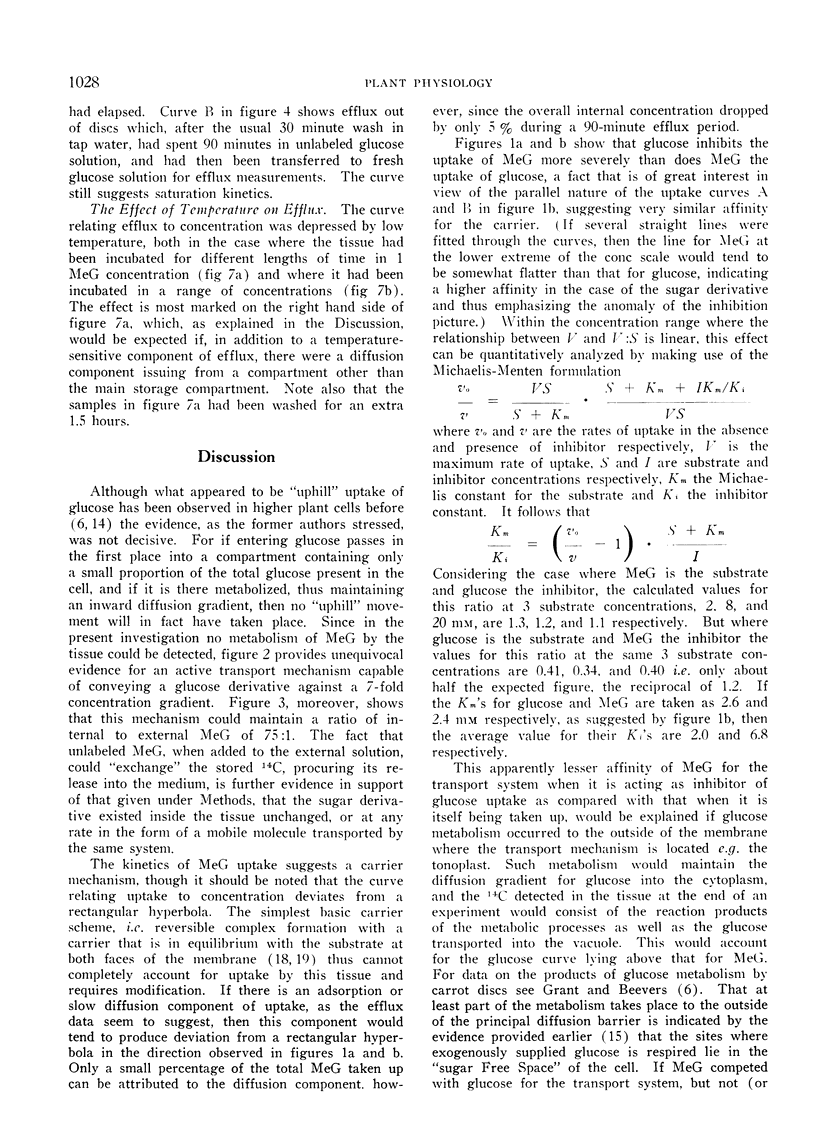
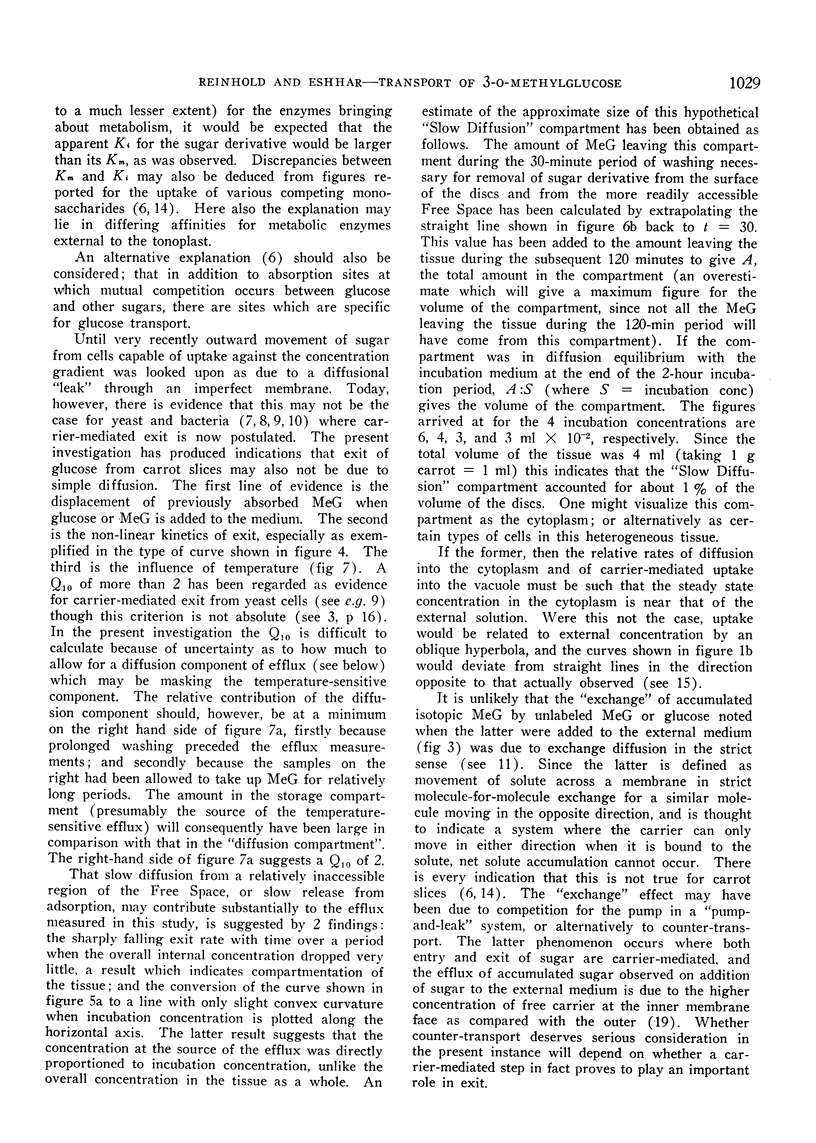
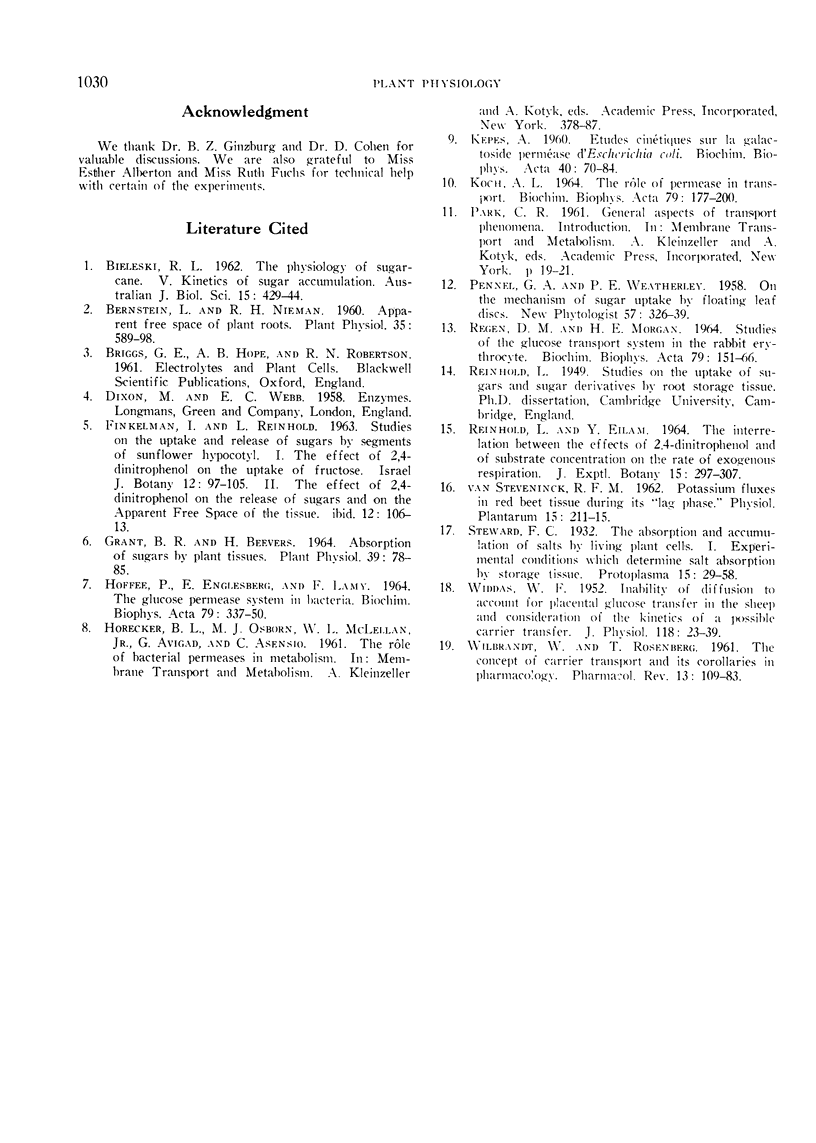
Selected References
These references are in PubMed. This may not be the complete list of references from this article.
- Bernstein L., Nieman R. H. Apparent Free Space of Plant Roots. Plant Physiol. 1960 Sep;35(5):589–598. doi: 10.1104/pp.35.5.589. [DOI] [PMC free article] [PubMed] [Google Scholar]
- Grant B. R., Beevers H. Absorption of Sugars by Plant Tissues. Plant Physiol. 1964 Jan;39(1):78–85. doi: 10.1104/pp.39.1.78. [DOI] [PMC free article] [PubMed] [Google Scholar]
- HOFFEE P., ENGLESBERG E., LAMY F. THE GLUCOSE PERMEASE SYSTEM IN BACTERIA. Biochim Biophys Acta. 1964 Mar 30;79:337–350. [PubMed] [Google Scholar]


